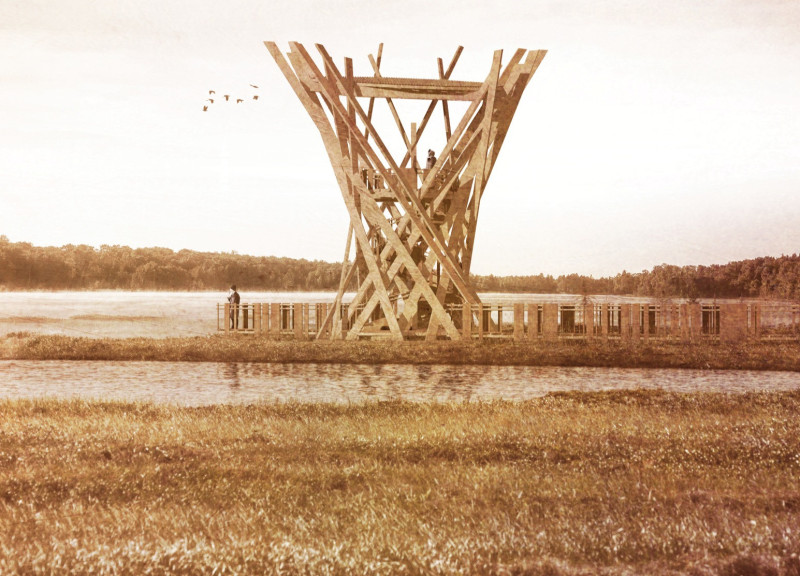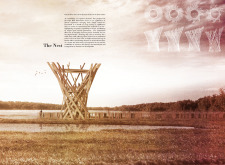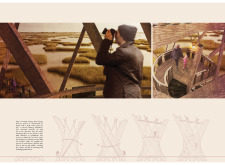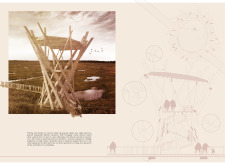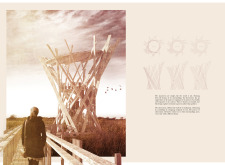5 key facts about this project
### Project Overview
Located within a marshland conservation area, the observatory tower serves as a platform for birdwatchers and nature enthusiasts, facilitating an interactive experience with the surrounding ecosystem. The design emphasizes environmental harmony and aims to enhance visitors’ engagement with wildlife while promoting ecological awareness. The concept centers on the interplay between structure and landscape, guiding users toward a deeper appreciation of their natural environment.
### Spatial Strategy and User Experience
The structure is characterized by a lattice-like arrangement of vertical and diagonal beams, which not only offers structural support but also contributes to a visually lightweight presence. As visitors ascend through the tower, they are met with a sequence of diverse viewpoints that gradually reveal the marshland and its avian inhabitants. The design incorporates spiral pathways and communal gathering spaces, fostering a rhythm that resonates with the natural behaviors of birds, thereby enriching the experience for both visitors and wildlife.
### Materiality and Sustainability
The use of wooden elements as the primary material underscores a commitment to sustainability and aesthetic integration with the marshland environment. Secondary materials, including steel fasteners for structural integrity and glass panels to enhance visibility, are strategically incorporated to maintain unobstructed views of nature. The finishes applied to the wood are designed for durability while preserving its organic character, thus reinforcing the project's ethos of environmental respect and functional elegance.


